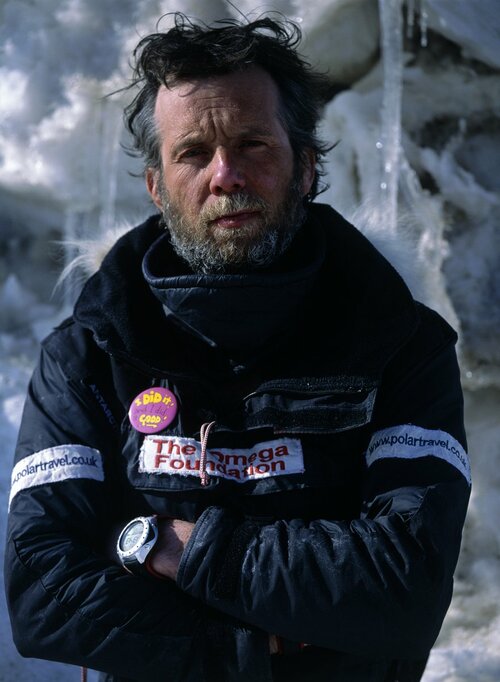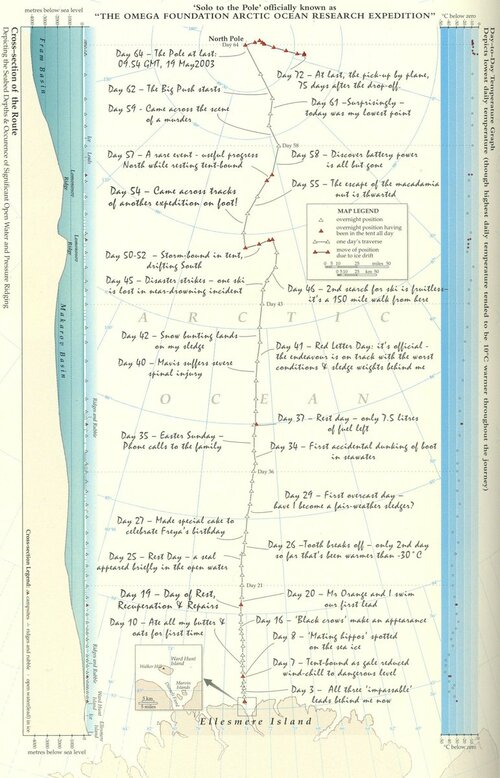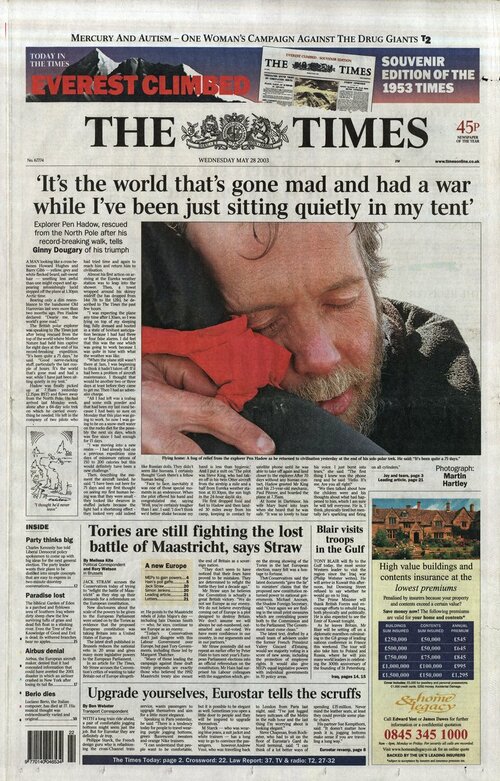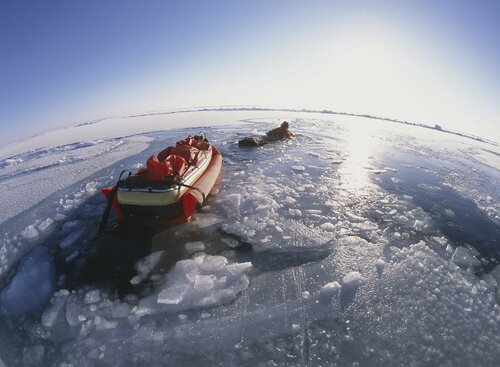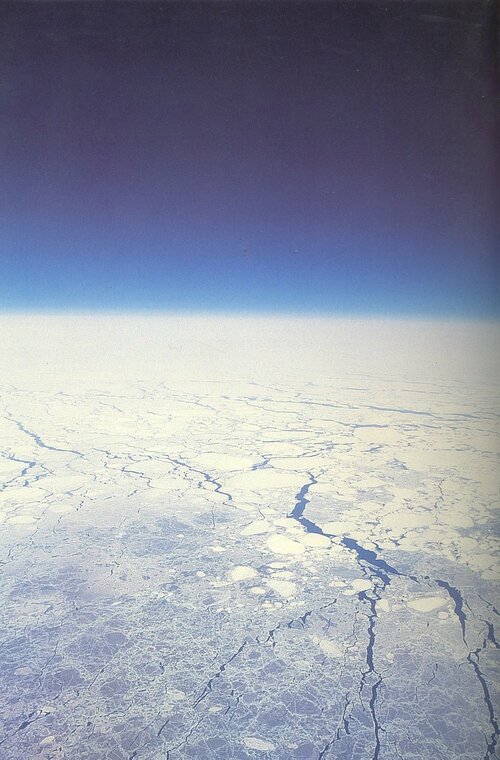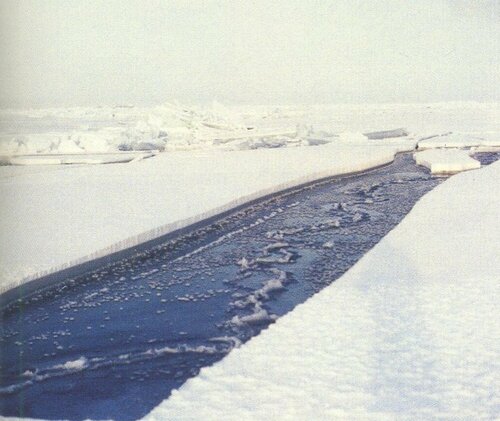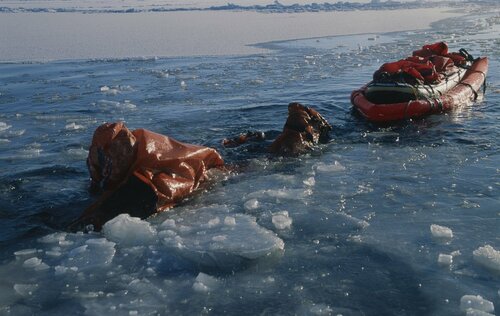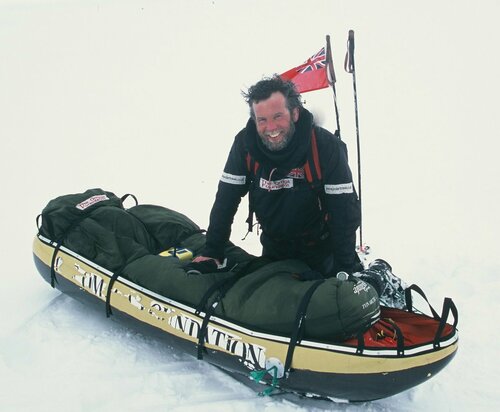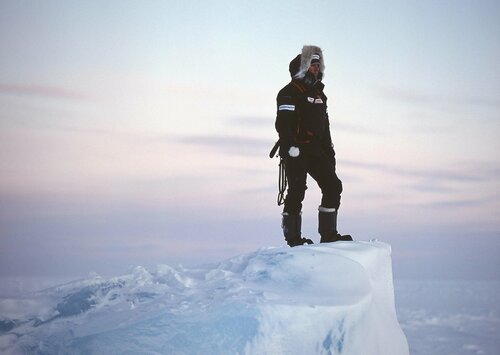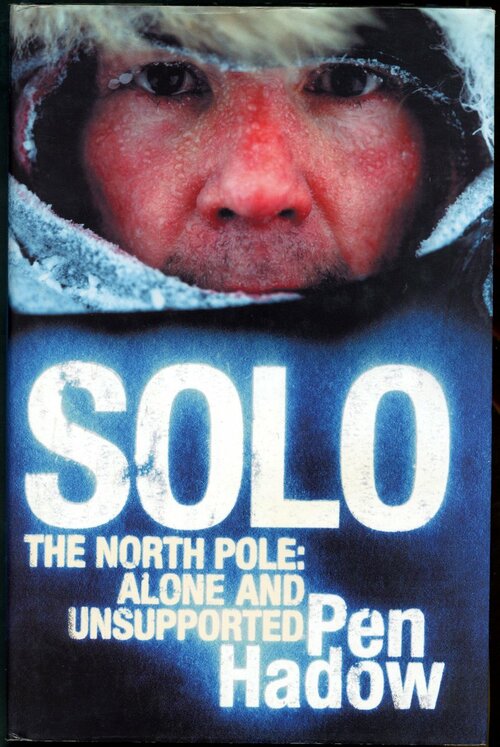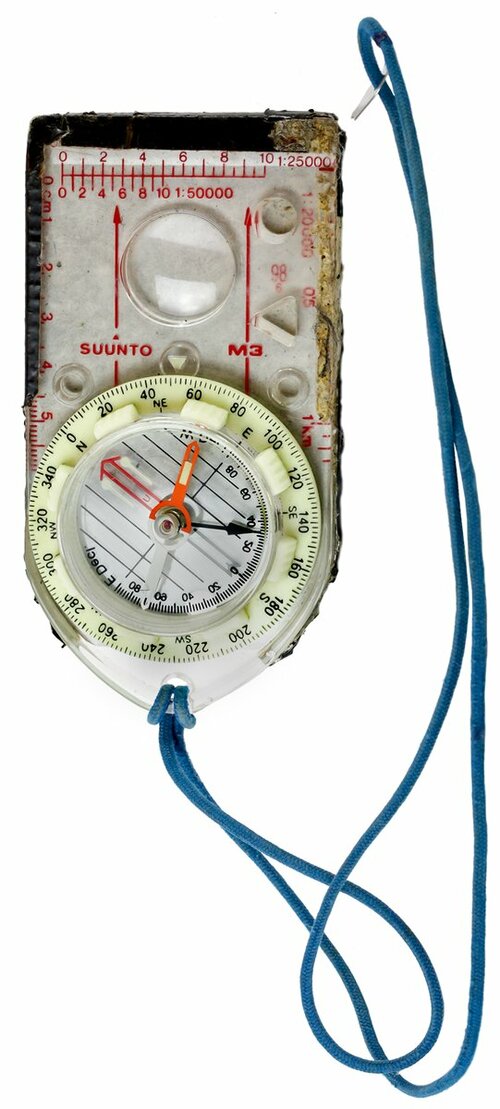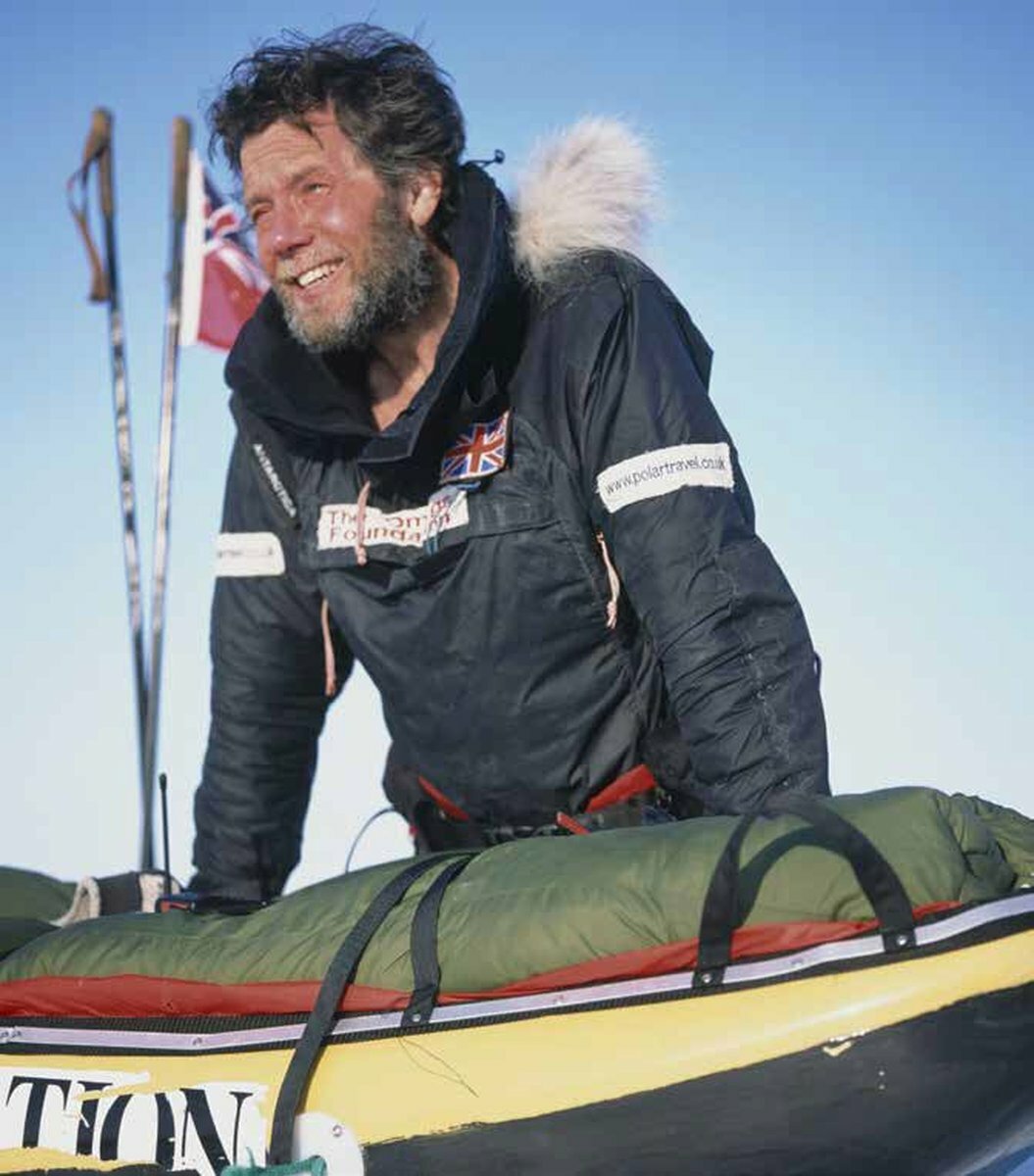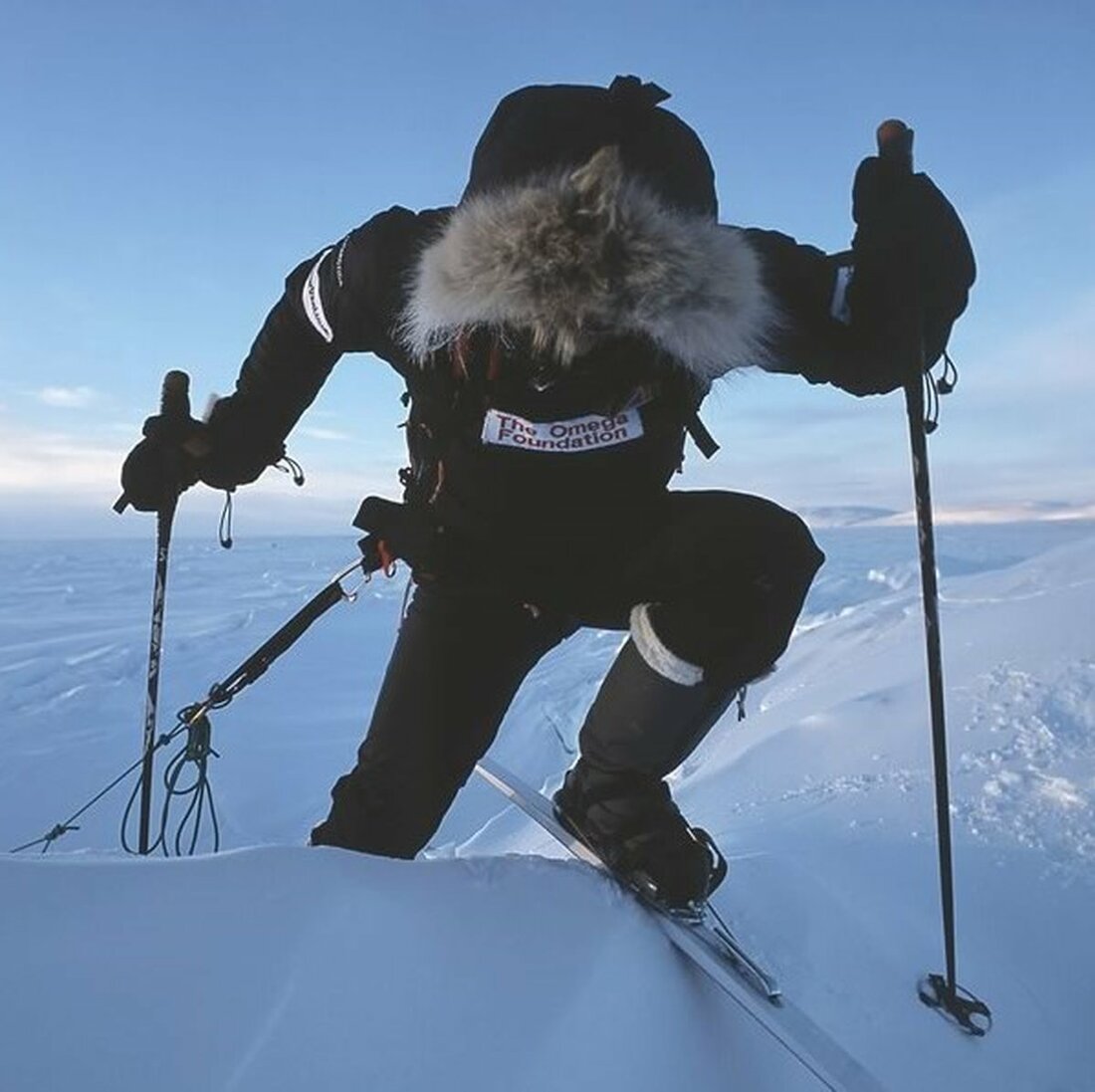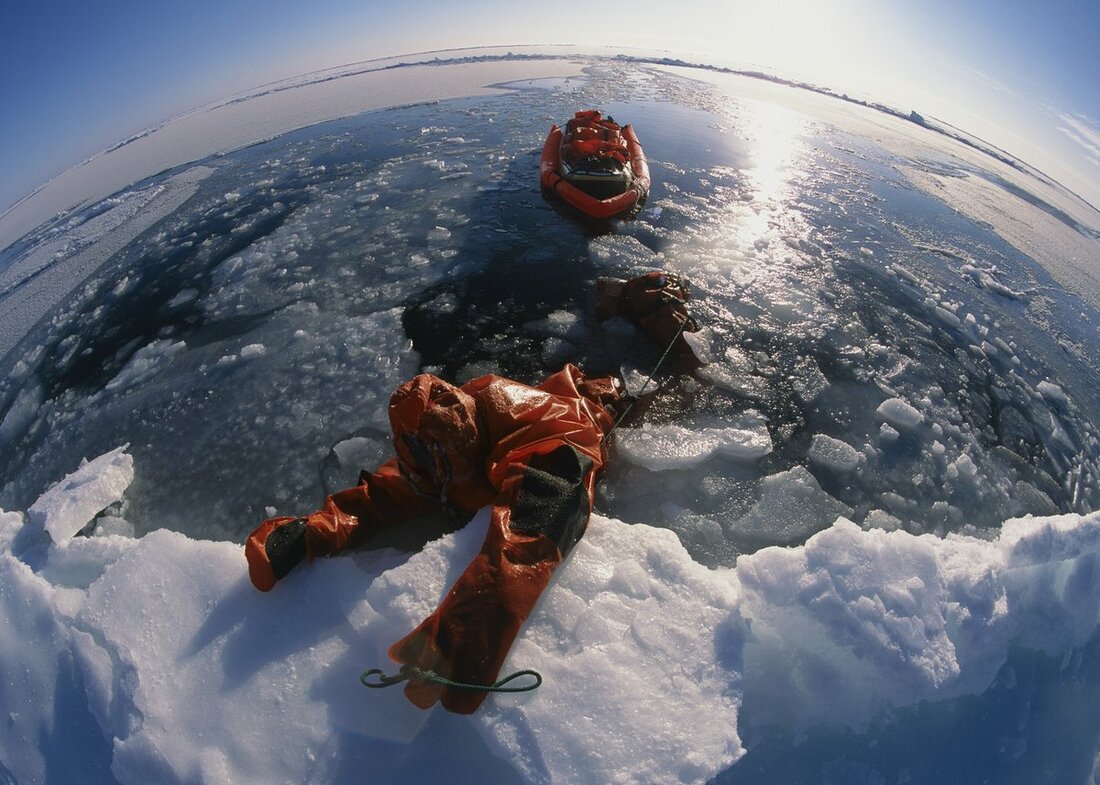Auction: 20003 - Orders, Decorations and Medals
Lot: 45
THE SOLO NORTH POLE COLLECTION
ALL PROCEEDS TO SUPPORT THE OCEAN CONSERVATION WORK OF
PEN HADOW'S 90NORTH UNIT
The Solo North Pole Collection includes everything I wore, or carried in my sledge, to the North Geographic Pole! All these items were mission-critical operationally which in some cases included psychologically. Such a journey 'at the bleeding edge of possibility' in such an extreme environment, required that almost every item of equipment had to be modified from the standard product, or otherwise custom-made, to be fit for purpose. The criteria included functionality, reliability, durability, repairability, and minimum weight. Rarely has such a collection of items been so essential to sustaining the life of a person, in self-isolation for so long, who pushed back the boundary of what is known to be humanly possible.
While this solo expedition was a high-profile world-first, it is also likely to be a world-last as it is unlikely to be repeated due to the changes in the Arctic Ocean's sea-ice cover caused by climate change (all supporting aircraft operations have been withdrawn from the region for safety reasons).
And so my Solo North Pole Collection may also come to symbolise the end-of-the-line for such pioneering feats on the Arctic Ocean sea ice.
When, at last, after 64 days alone, I stood at 90º North at 0954GMT on 19 May 2003, with everywhere, everything and everyone to my south, the overwhelming sense I felt was one of utter, utter relief. That it was over. That I had actually done it. That the last 15 years of unrelenting focus, including attempts in 1994 and 1998, to push beyond what was known to be possible had finally been rewarded. The cost, though high, including several near-death situations on the sea ice, could now be more easily justified - to my family and friends, to my loyal project partners and to myself.
Standing there, with no plans for the future having been conceivable until I had completed this self-defining mission, I suddenly found myself open to myriad possibilities. That 'utter relief' was, within hours overtaken by gathering waves of excitement for the unconstrained future that lay ahead …
The achievement of completing the first solo journey from Canada to the North Pole (i.e. involving no resupplies by third parties) became the front page lead story for The Times and many other newspapers, magazines and online news sites around the world - though I had no idea of this as I waited alone in my tent, effectively cut-off from the world, save for the twice daily 15-second phone calls to the pilots to report my weather and sea-ice conditions. I was in a very weird and unexpected state of limbo, desperate to share my feelings and story, but with less than 10% battery power remaining on my sat-phone and no way of knowing how many days I would need to wait for my pick-up plane, I could not risk making such non-essential calls.
While global media coverage spiraled to unprecedented levels for such a polar endeavour, in its wake letters followed from HM The Queen, HRH Prince Charles, the Prime Minister and many others from around the world; and months later the British Library included that same front page of The Times in its Top 100 British Newspaper Front Pages of the Last 100 Years … and an appearance with Sue Lawley on the BBC's iconic Desert Island Discs became the cherry on the icing of the cake!
Several insights emerged during my journey including: the critical significance of being able to manage the surprisingly wide array of emotional responses that inevitably arise; and the importance of knowing how to counter-act the insidious effects of hypothermia in order to avoid making mistakes of any scale and ensure northward progress was maximized in every 75-minute sledging session.
But the most shocking and valuable insight was the extent to which I'd had to swim across the open water and through the thin ice between the ice floes to reach the Pole. Of the cumulative total of 850 hours I spent hauling my sledge northwards, 30-40 hours of those were spent swimming in my immersion suit while towing the sledge. I had put myself through a literally immersive experience - repeatedly. It would be hard to overstate the cumulative psychological impact of committing to these amphibious crossings, sometimes in the gathering evening gloom, with a head-torch offering limited forward visibility, and the possibility of a life-ending polar bear attack at any moment (it being impossible to defend myself once committed to such crossings ).
And so it was, as I lay in my tent drifting southwards from the Pole in late May 2003, that it dawned me I had both a unique responsibility and an opportunity to represent the interests of the Arctic Ocean's super-vulnerable 'floating ice-reef ecosystem' to a global audience. And why so? Because the unique habitat provided by the Arctic sea ice is rapidly being lost to climate change. You see the much-reported sea-ice loss is in equal measure 'habitat loss'. And unbeknownst to many, some of the world's best-loved mammals depend on the sea ice for all, or part, of their life cycles, such as: bowhead whale (the world's second largest animal at 100,000kg); grey whale (the only seabed-feeding whale); the spiral-toothed narwhal (source of the mythical unicorn); beluga (known as the canary-of-the-sea for its sophisticated communications); orca (the world's largest dolphin); all three sub species of walrus; all six Arctic species of seal; even Arctic fox; and, of course polar bear.
So subsequently I instigated and led the US$7.5 million international scientific research programme, Catlin Arctic Survey (2007-2012), to investigate Arctic Ocean sea-ice loss, ocean acidification, and ocean circulation. And I realised that scientific work to understand this ecosystem will need to continue for many years, but if leadership was not shown NOW to start building the case with international policy-makers for the creation of a North Pole Marine Reserve to protect the wildlife dependent on the international waters surrounding the North Pole, then the science would be to no avail.
The Central Arctic Ocean's wildlife is super-vulnerable because the Arctic sea-ice cover, which has throughout human history created a natural barrier to entry for surface vessels, is now fast-disappearing. But worse, the region's wildlife face the double-whammy of reduced habitat and increased human activity from commercial fishing, international cargo shipping, cruise-ships, and mineral exploration and extraction, all of which have disruptive, damaging and deadly impacts on wildlife.
Some of the mammals listed above may not be able to adapt swiftly enough to the speed of loss of sea ice. But the Arctic Ocean will always have the northern hemisphere's coldest waters, and marine species will continue to migrate north as waters to the south heat up due to climate change. The Central Arctic Ocean is likely to become a biological refugium, a place-of-last resort on our warming planet.
All proceeds from the Sale of the Solo North Pole Collection will go towards the specialist work of the 90North Unit, a nascent ocean conservation organisation focused exclusively on ecosystem research, public education and policy advocacy to catalyse the process that will result in an international treaty to create the North Pole Marine Reserve for the benefit of global biodiversity and humankind in perpetuity.
Contact Pen Hadow, Director, 90North Unit: 07970 619 161 and [email protected]
www.penhadow.com & www.90northunit.org
'All men dream; but not all equally. Pen Hadow dreamt of making a 478-mile journey to the North Pole that had never been achieved. He showed that the Edwardian spirt of adventure displayed by Shackleton and Scott is still very much alive today…This was an extraordinary triumph of physical and mental endurance, and should serve as a reminder to us all that our limits are often far beyond where we may assume them to be.'
The Times
Pen Hadow was born at Perth, Scotland on 26 February 1962. He was closely related to Douglas Robert Hadow, nineteen years old when a member of the first party to scale the Matterhorn in 1865 and Frank Hadow, the 1878 Men's Singles Wimbledon Champion. Early influence in polar matters came from Enid 'Nanny' Wigley, who had originally been hired by Kathleen Scott, widow of Captain Scott, to tend to their son, later Sir Peter Scott. When Peter grew up, Wigley would become nanny to Pen's father as a child, who later retained her to look after Pen. In his own words:
'…by then well into her seventies, was recruited to supervise my early upbringing, and under her critical eye my father applied her Spartan, 'patents pending' programme for the first few years of my life.'
Latterly educated at Temple Grove and then, by family tradition, Harrow. He excelled at Harrow, becoming Head of School and Captain of the School Rugby XV and Football XI. He also inaugurated the 'Long Ducker' run in 1977, a 20 mile run from Harrow to Marble Arch and back, raising funds on that first occasion for the Silver Jubilee Fund. He then won the Professor Mead Scholarship at University College London and graduated with a BA in Geography in 1984. After a short while he found work with IMG and was involved in its management of equestrian events and competitors and first got a taste of polar travel in 1989. His father had stirred his imagination in the field as a boy and it was no surprise that when he went, there was to be no going back. This led to the establishment of The Polar Travel Company, specializing in bespoke guided expeditions to both the Arctic and Antarctic and saw Pen organize the first all-women expedition to the North Pole, the McVities Penguin Polar Relay in 1997.
Pen's formulation of the idea for a solo, unsupported expedition to the North Geographic Pole - a feat attempted by adventurers, guides and military figures but never achieved. So it was, with the blessing of the Canada's Royal Canadian Mounted Police, that Pen would strike for the Pole from Ward Hunt Island. He had prepared at Resolute Bay, Nunavut and left the following message upon setting off on 17 March 2003, from the hut on Ward Hunt Island:
'This is Pen Hadow writing my last words before setting out on a solo expedition to the Pole, without resupply. Who knows what's going to happen? But I feel I've prepared myself as well as I can.'
He spent a remarkable 64 days out in the open, alone and without assistance. Along the way, he faced human hardship and suffering of the highest order. Hauling the 265lb sledge, he reached the North Pole on 19 May 2003, having covered nearly 500 miles. He dodged cracks in the ice, fast-moving leads of freezing Arctic waters - which required spending approximately 30-40 hours swimming (whilst towing all equipment) in his immersion suit and the constant threat of Polar Bears to reach his goal.
The most frightening and dangerous moment came on Day 44 when he fell neck-deep into the sub-zero waters of the Arctic Ocean. In the struggle to escape and haul himself free, his right ski was lost. Having emerged from the water, rather than immediately make camp and dry himself, he pulled on his immersion suit to search for the ski, which was ultimately lost.
The feat rightly made headlines across the world; and it is a feat which had never been achieved before and seems unlikely to be done in a similar manner again due to the frightening loss of summer sea ice in the Arctic.
The facts, emotions and events of that remarkable expedition are best told in SOLO - To The North Pole: Alone and Unsupported.
CATALOGUER'S NOTE
Since the huge successes of the Polar Exhibition staged at Spink in November 2019 - the largest of its type in history - we have seen a surge in interest on this fascinating subject.
It is with great pleasure that we have the opportunity to offer these important artefacts for his ground-breaking and unsurpassed Solo Unsupported Expedition from Canada to the North Geographic Pole in 2003. Many of you will have read his interview recently published in The Spink Insider or seen his image over the years in any number of international publications and newspapers.
To be offering these items in support of a truly important cause is very close to all our hearts here at Spink so that we might raise awareness and protect the Arctic Ocean's wildlife. Thanks must also go to the photographer Martin Hartley, who has graciously permitted our use of his images in this catalogue.
Please do not hesitate to make contact if we can provide any further details or images of any item and please do bid strongly in this unique opportunity to acquire these fantastic items in support of a most worthy cause.
Marcus Budgen, October 2020.
The Primary Magnetic Compass used by Pen Hadow to navigate to the North Pole
Suunto M3 magnetic compass, 120mm x 63mm, with mirror additionally affixed to the reverse, to enable self-checks for freezing cold injuries on face, with original wearing chord, good condition
Subject to 20% VAT on Buyer’s Premium. For more information please view Terms and Conditions for Buyers.
Sold for
£180
Starting price
£110


